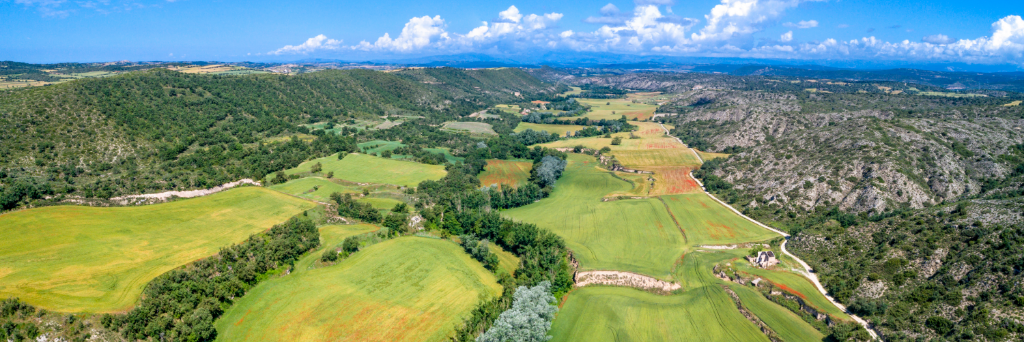Geologically, the site consists of gypseous materials that emerge from within the eroded nucleus of the Sanaüja and Pont anticline.
FLORA AND VEGETATION
In the Sió-Llobregós valleys, there are gypsicolous vegetation formations, such as continental gypsicolous thyme scrubland of Ononis tridentata, Gypsophyla hispanica, and Helianthemum squamatum. In the sunnier areas, where the gypsum recedes, calcicolous scrubs of rosemary or small fragments of holm oak groves persist and in the ubacs there are some relatively important reserves of Valencian oak groves (Quercus faginea).
The species that are strictly protected by the PEIN are the following:
Gypsophila hispanicam, Helianthemum squamatum, Lepidium subulatum, Ononis tridentata, Tortula sp.
Flora species from Annex II of Directive 92/43, of habitats
A list referring to the grouping of areas forming part of the Natura 2000 network (Sió-Llobregós valleys)
In the case of the Sió-Llobregós Valleys ENP (Natural Space of Ponent), the species include: Petrocoptis montsicciana.
WILDLIFE
The Sió-Llobregós Valleys are a good scattering area for young Bonelli's eagle (Hieraaetus fasciatus). There are also some other interesting steppe birds: the little bustard (Tetrax tetrax) is to be found here in one of the highest densities of the species in Catalonia. The European roller also inhabits this area (Coracias garrulus).
Wildlife species from Annex II of Directive 92/43, on habitats
A list referring to the grouping of areas forming part of the Natura 2000 network of the Sió-Llobregós valleys.
In the case of the Sió-Llobregós Valleys ENP (Natural Space of Ponent), the species include: Chondrostoma miegii, Lutra lutra, Myotis capaccinii, Myotis emarginatus, Rhinolophus ferrum-equinum.
Bird species from Annex II of Directive 2009/147, on birds
A list referring to the grouping of areas forming part of the Natura 2000 network the Sió-Llobregós Valleys.
In the case of the Sió-Llobregós Valleys ENP (Natural Space of Ponent), the species include: Milvus migrans, Milvus milvus, Neophron percnopterus, Gyps fulvus, Circaetus gallicus, Circus aeruginosus, Circus cyaneus, Circus pygargus, Aquila chrysaetos, Hieraaetus pennatus, Hieraaetus fasciatus, Falco peregrinus, Tetrax tetrax, Burhinus oedicnemus, Bubo bubo, Caprimulgus europaeus, Alcedo atthis, Coracias garrulus, Melanocorypha calandra, Calandrella brachydactyla, Galerida theklae, Lullula arborea, Oenanthe leucura, Sylvia undata, Pyrrhocorax pyrrhocorax, Emberiza hortulana, Elanus caeruleus.
